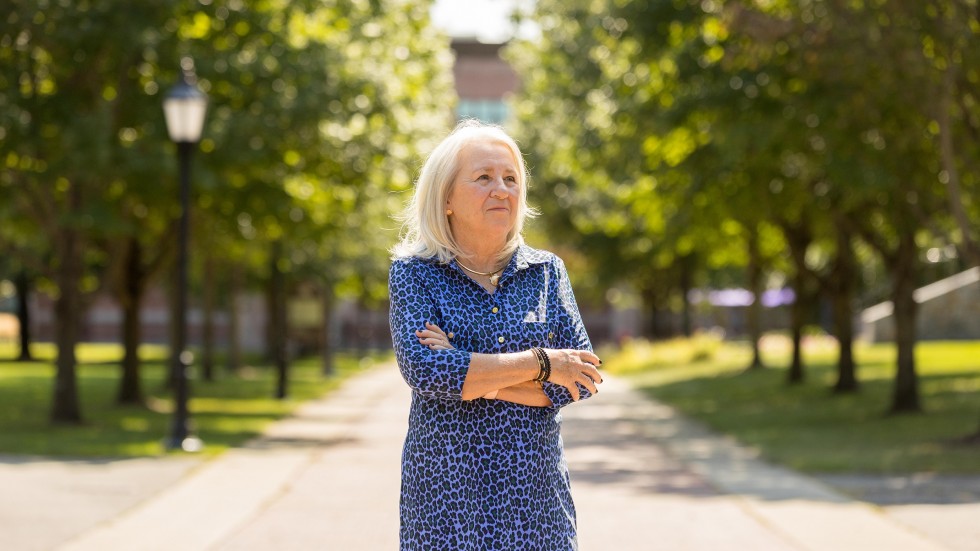The James E. Hayden Chair for the Study of Race, Ethnicity, and Social Justice
Conceived by a 33-member team of faculty and staff led by Associate Professor of English Laura Scales as part of a Bold Ideas for Academic Innovation and Excellence initiative, the proposal recognized the need for greater faculty diversity and for a more robust examination of race and racism in the College’s curriculum.
“In a time of great inequality, suffering and marginalization, we need to better understand these challenges and how to cultivate social justice in response, especially in the areas of diversity, equity and inclusion. These matters must be addressed in our communities and in the colleges and universities that we love. The Center gives us a way of assessing what those challenges really are, and that would have been Jim’s approach,” Liz says.
According to Provost and Vice President for Academic Affairs DeBrenna LaFa Agbényiga, “The Hayden Chair will lead the Center, which is located in the Martin Institute, and it will be a home for innovative and interdisciplinary teaching, research and public dialogue. With the collaborative efforts of faculty and staff, the Center will seek to diversify the faculty, infuse the study of race and ethnicity into the curriculum, recruit and retain more students of color, and create opportunities for interdisciplinary work in the fields of race, ethnicity and social justice.”
A search is under way for a distinguished scholar who will join the Stonehill faculty as the inaugural Hayden Chair in the fall 2022. As Chair, that scholar will hold a tenured faculty position and serve as director of the Center.
Three Faculty Fellows are working with a student-faculty committee to plan the Center’s inaugural events. The Hayden Family Lecture will be held in the 2022-2023 academic year.
The Faculty Fellows are Assistant Professor of Political Science Anwar Mhajne, who specializes in international relations and comparative politics, with a focus on gender, religion and Middle Eastern politics; Assistant Professor of Environmental Science Eric LeFlore, a wildlife ecologist and conservation biologist specializing in community-based solutions to human wildlife conflicts in South Africa; and Program Director in Latin American and Caribbean Studies Kirk Buckman, who is also assistant professor of political science, specializing in comparative politics and political economy.
An interdisciplinary cluster hire of at least three tenure-track faculty members with scholarly expertise in U.S. and comparative studies of race, ethnicity and social justice will follow the appointment of the Hayden Chair. These faculty hires will allow intentional and coordinated planning of curricular innovation across disciplines.

